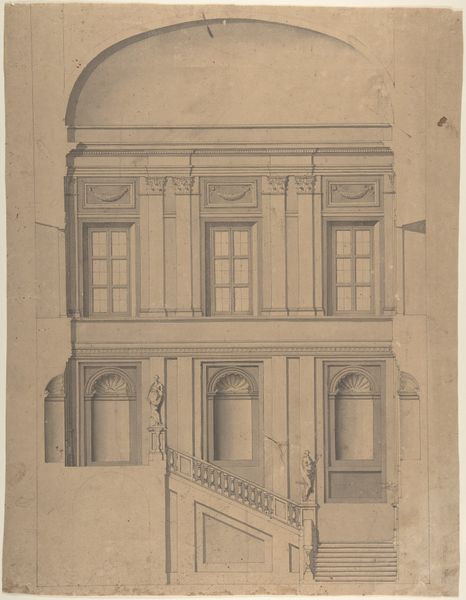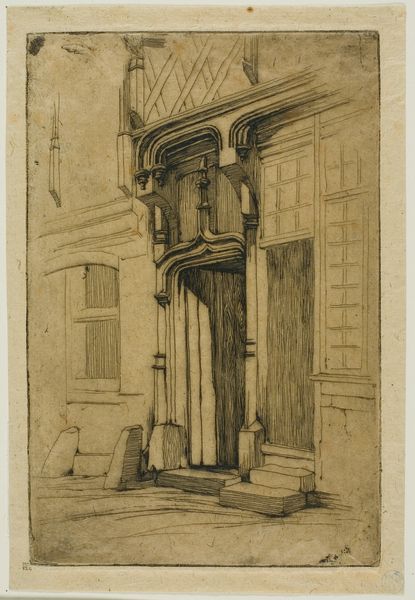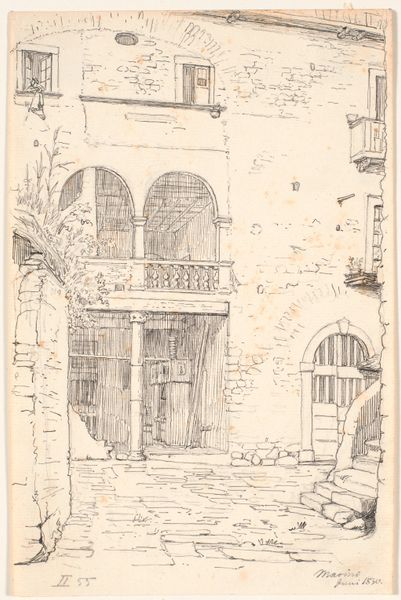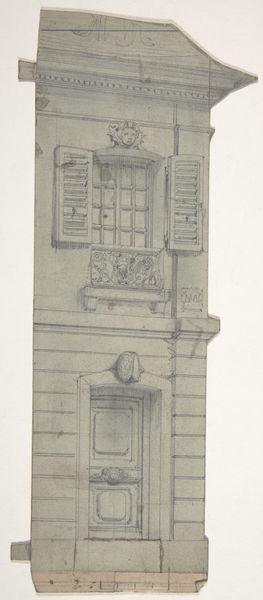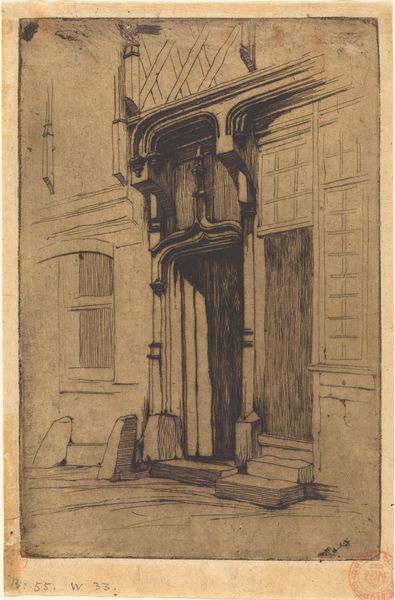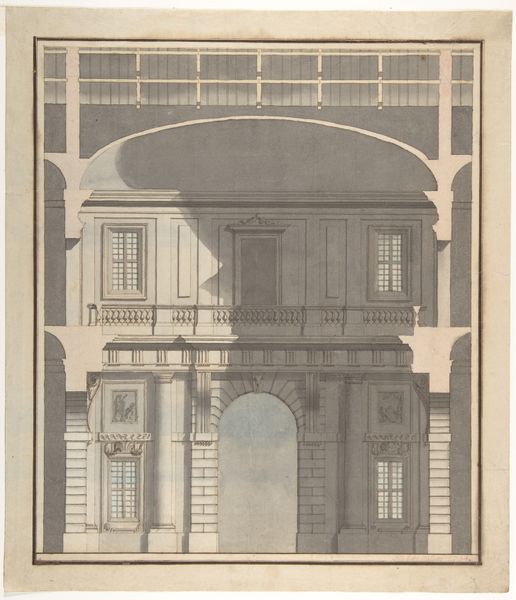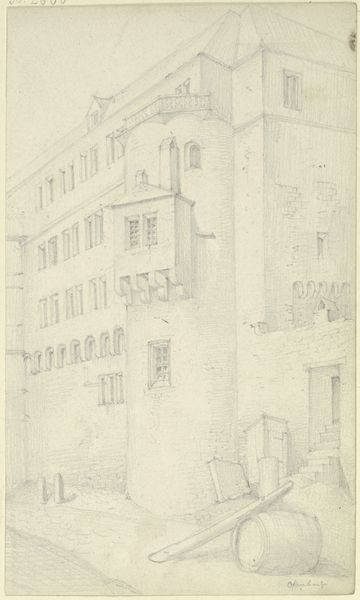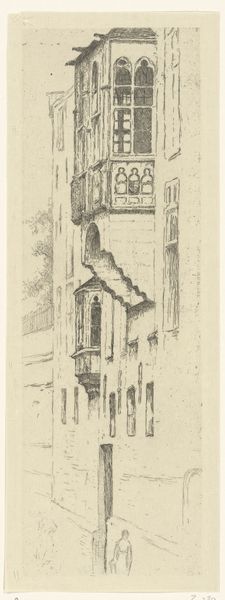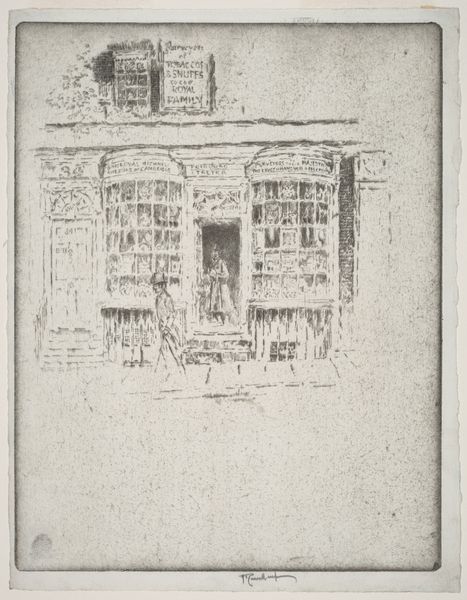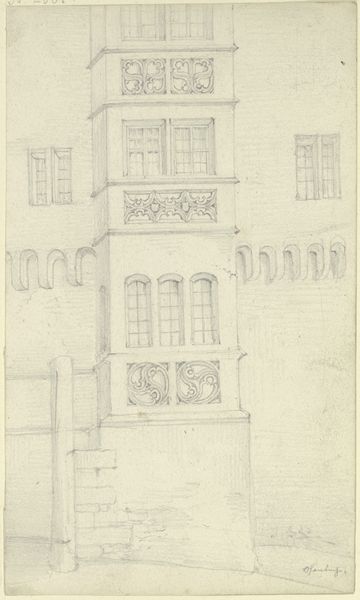
Design for a Stage Set at the Opéra, Paris 1830 - 1890
0:00
0:00
Dimensions: sheet: 9 7/16 x 3 1/2 in. (23.9 x 8.9 cm)
Copyright: Public Domain
Editor: This watercolor drawing is titled "Design for a Stage Set at the Opéra, Paris," made by Eugène Cicéri sometime between 1830 and 1890. I’m struck by how sparse it feels, almost like a memory of a grand building, reduced to essential architectural features. What do you make of its historical context? Curator: It’s a fascinating glimpse into the theatrical world and the changing urban landscape of Paris. Stage design in the 19th century wasn't just about aesthetics; it was a reflection of social values and the power of institutions like the Opéra. This sketch probably represents the old Opéra before the current one, and as such evokes ideas around obsolescence and the transformation of culture. Consider how this image might have shaped public perception of the Opéra and, more broadly, Parisian identity. How do you perceive this link between image and collective identity? Editor: I hadn’t thought of the stage design as shaping identity. The old versus new Opéra angle adds a layer I wasn't seeing initially, the theatre as a kind of historical monument under constant renovation. Curator: Exactly. The act of preserving, transforming, or even demolishing architectural forms carries symbolic weight. Images of the city, whether realistic or idealized, serve as powerful tools in shaping our collective memory and aspirations. Do you see other visual aspects that would be typical of Romanticism? Editor: Well, it definitely focuses on emotions that are evoked from a location that's on a human scale, like a street, rather than grand historical allegories. It makes the theatre accessible through its representation. Curator: Precisely! We often see it this way when art is connected to life and feelings, instead of history. This piece is now a tool to help construct identity through public art, allowing us to consider the relationship of institutions to urban transformation and social ideals. Editor: That definitely makes me see it in a new light, understanding it less as a mere depiction, and more as an element in the city’s story.
Comments
No comments
Be the first to comment and join the conversation on the ultimate creative platform.


